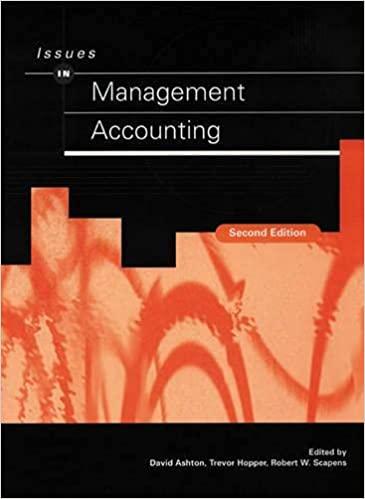write it in 500-600words. last I post this but get incorrect answer. please it should be self written and not copying from the article which is already submitted in chegg.
| Objectives By the end of this assignment, students will be able to Create a problem statement that describes the overall intent of a qualitative research project using the five-point taxonomy described in the unit notes. | Instructions Think of a problem or an issue - past or current and create a Problem Statement for it using the five elements described by Cresswell quoted in this week's lecture. Does your problem statement build' from one element to another in a linear way, or is it iterative? Which way is better? Write this in 500 words (+/- 25 words excluding references, diagrams, and cover page); include a brief description of the problem before you address the five elements and create your problem statement. Use APA formatting. The assignment value is 10% of your overall course grade. Evaluation The following rubric indicates those areas you should be focusing on in preparing your assignment, and how the instructor will weigh these components relative to one another. Grade /50 Activity/Competencies Demonstrated 1. Application of the five elements in the taxonomy 2. Analysis of the iterative versus linear question 3. APA Referencing and formatting (title, headings & references) /30 /10 In the literature about qualitative research methods, there is some confusion offered as to what constitutes a research problem, and what constitutes a research hypothesis. In this week's resource, "Fundamentals of Qualitative Research Methods: Developing a Qualitative Research Question", for example, the "aim or objective of the research question is argued to not contain an a priori (that is, thought of before) hypothesis. In truth, however, a lot of qualitative research is motivated to explore a hypothesis. Often the question is really based on a hypothesis - such as: "Human companions of large dogs are less likely to stoop-and-scoop after their dogs than human companions of small dogs because big dog companions defer less to authority". The question may have to be re-jigged to match the ease of getting data; we may, for instance, find it is better to demarcate between 'big and small' dogs just to get more data, and use "Rottweiler' as a proxy for "big", and "Shih-tzu' as a proxy for 'small. Further, we might question our hypothesis itself, the relevant underlying reason may not have anything to do with authority, but may, rather, have to do with sociability. Deciding precisely how to define the research problem can involve much exploration and many iterative considerations. It is important to recognize that quantitative research, as an inductive and exploratory process, can both produce hypotheses and be about hypotheses. The research problem, apart from creating the key question and framing the data set, also mimics quantitative research in some ways as the source of the data is often described as a kind of sample size. For example, if we interview only three big dog owners and three small dog owners, even if our 'data' may be interesting, we do not really have a big enough sample size to feel confident with our information. "Quantity has a quality all of its own" is sometimes true. Just as we would not accept a sample size of six as statistically meaningful for quantitative data, it is not likely to be meaningful for qualitative data either. References amount of time they have to make a decision" (Wikiquote). The scope of the research problem and, by extension, the research question, is also crucial. A key characteristic of qualitative research is that it is usually very easy to obtain an overwhelming amount of data for which there is no good way for the researcher to distill what is needed from what is not needed. Keep in mind that "data" for qualitative research often comes in the form of a narrative derived from interviews, focus groups, open-ended surveys, and literature surveys, and to find what is relevant, particularly if there is a fluid hypothesis, is often difficult. The research problem contributes to framing the entire project, mostly by what it manages to exclude from the data collection. Framing is about defining what is to be considered, and what can be ignored. Often at the beginning of exploring the research problem these boundaries themselves need to be adjusted and changed, as the data question relationship is explored. The best research problems are defined by focusing on a single concept, a single idea, or a single quality, even though this may involve several research questions. The research problem needs to be created with a view to its feasibility Below is a diagram from Creswell that illustrates what five things need to be considered for the creation of a complete research problem in qualitative research: Five Elements of a "Problem Statemer FLOW OF IDEAS What Evidence Deficiencies Remedying Educational the Deficiel Topic for the in the Issue Will Do for Evidence Select Subject A concern Evidence from In this body of Audiences area A problem the literature evidence, what How will add Something Evidence from is missing? what we need that needs practical What do we know help: a solution experiences need to know researchers - educators policy make individuals those in the Issue more about










